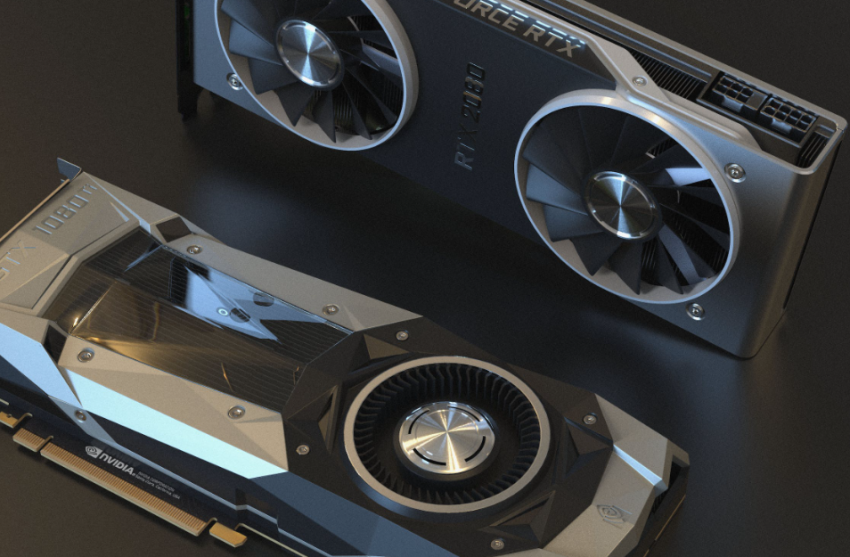The graphics processing unit (GPU) market is ablaze with competition, and two titans stand at the forefront: NVIDIA’s GeForce RTX 3080 and AMD’s Radeon RX 6800 XT. In this detailed analysis, we’ll dissect the technical specifications, architectural nuances, performance benchmarks, and user-centric factors to crown the champion in this GPU battle royale.
Introduction
In a landscape where gaming enthusiasts demand top-notch performance, the RTX 3080 and RX 6800 XT emerge as flag bearers for NVIDIA and AMD, respectively. Understanding the significance of these GPUs requires a closer look at their specifications and the impact they have on the gaming experience.
Technical Specifications
NVIDIA GeForce RTX 3080
Boasting a powerful Ampere architecture, the RTX 3080 features a high CUDA core count, ample VRAM, and innovative technologies like NVIDIA Reflex. Let’s delve into these specs and see how they stack up.
AMD Radeon RX 6800 XT
On the other side of the ring, the RX 6800 XT harnesses the RDNA 2 architecture, promising groundbreaking performance. With a focus on compute units and Infinity Cache, AMD aims to redefine gaming experiences. Let’s dissect these specifications in detail.
Architecture Showdown
Understanding the architectural foundations is crucial in deciphering the performance disparities between the RTX 3080 and RX 6800 XT. NVIDIA’s Ampere and AMD’s RDNA 2 architectures each bring their unique strengths to the table. How do these architectures influence real-world gaming scenarios?
Benchmarking Performance
In the fast-paced world of gaming, raw performance is king. We’ll explore gaming benchmarks for both GPUs, dissecting frame rates, resolution capabilities, and the impact on popular gaming titles. A cross-platform performance comparison will offer a holistic view.
Ray Tracing and DLSS Technology
The battle extends beyond raw power as we explore the realms of ray tracing and AI-driven enhancements. NVIDIA’s RTX technology, including Ray Tracing and DLSS, takes center stage against AMD’s approach. How do these technologies shape the visual fidelity and overall gaming experience?
Power Consumption and Efficiency
Beyond performance, considerations like power consumption and thermal management are paramount. We’ll evaluate the power requirements of the RTX 3080 and RX 6800 XT, scrutinizing their cooling solutions and addressing concerns about energy efficiency and environmental impact.
Price and Value Proposition
While power and performance are essential, the price tag often dictates a consumer’s choice. We’ll analyze the pricing of both GPUs and evaluate the cost-to-performance ratio. Additionally, we’ll consider additional features and software offerings that might sway the value proposition.
User Experience and Software Integration
Beyond the hardware, the software ecosystem plays a pivotal role. We’ll explore the user interfaces, driver support, and user feedback for both NVIDIA and AMD, providing insights into the daily experiences of GPU users.
Future-Proofing and Upgradability
Investing in a GPU is a long-term commitment, and users crave future-proofing. We’ll discuss the longevity of the RTX 3080 and RX 6800 XT, considering potential upgrade paths and compatibility concerns in the ever-evolving landscape.
Community Reception and Reviews
User feedback and expert reviews provide valuable insights. We’ll aggregate community reception, highlight common praises, and address criticisms for both GPUs. What do real users and industry experts have to say about these graphics powerhouses?
Availability and Market Trends
Historical availability challenges have plagued the GPU market. We’ll dissect the current market trends, predicting the future trajectory. For prospective buyers, understanding the market dynamics is crucial for making informed decisions.

Comparative Analysis with Previous Generations
To grasp the true evolution, we’ll compare the RTX 3080 with its predecessor, the RTX 2080 Ti, and pit the RX 6800 XT against the RX 5700 XT. This historical perspective provides context for the advancements made in performance and features.
Pros and Cons Breakdown
No product is perfect. We’ll dissect the strengths and weaknesses of the RTX 3080 and RX 6800 XT, providing a balanced view for potential buyers to make an informed decision.
Recommendations and Use Cases
Tailoring recommendations based on specific needs is essential. We’ll outline ideal scenarios for choosing the RTX 3080 and RX 6800 XT, considering factors like gaming preferences, content creation, and overall user priorities.
Conclusion
In this GPU battle royale, both the NVIDIA GeForce RTX 3080 and AMD Radeon RX 6800 XT prove their mettle. The choice ultimately depends on individual preferences and requirements. As the dust settles, we summarize the key points and deliver a final verdict on which GPU emerges as the reigning champion.
FAQs (Frequently Asked Questions)
- Which GPU is better for gaming, the RTX 3080, or RX 6800 XT?
- Both GPUs offer stellar gaming performance, but the choice depends on individual preferences and priorities. Analyze the specific features that matter most to you.
- Do these GPUs support the latest gaming technologies?
- Yes, both the RTX 3080 and RX 6800 XT support cutting-edge gaming technologies, including ray tracing and AI-driven features.
- What is the expected lifespan of these GPUs in terms of future games?
- Both GPUs are designed to handle upcoming games, but factors like technological advancements and game optimization play a role in long-term viability.
- How do the power consumption and heat generation compare between the RTX 3080 and RX 6800 XT?
- Power consumption and heat generation vary, and it’s essential to consider your system’s cooling capabilities. Refer to technical specifications and user reviews for detailed insights.
- Are there any specific compatibility concerns with these GPUs?
- Compatibility depends on your existing hardware and software. Check the official documentation and community forums for any reported compatibility issues.


